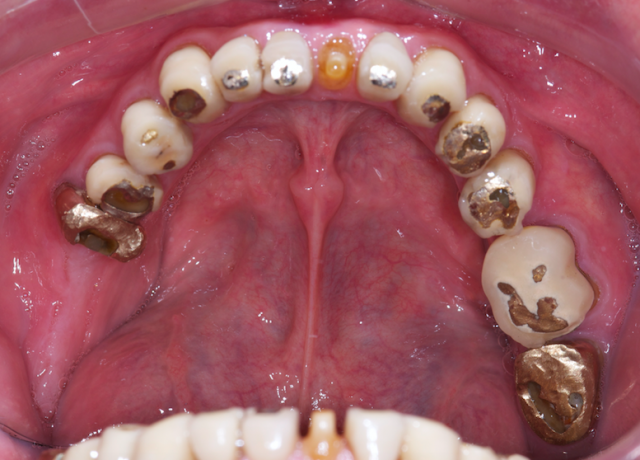A Return Worth Investing In for Your Dental Career
In 2015, I was holding a three-day Airway Prosthodontics workshop in San Antonio. At a break on the final day, a participant approached me and asked very aggressively, ”What is my ROI?“
My mind went blank. The first thing I did was run through every permutation of the letters R-O-I. I came up with some really interesting ones! I quickly recovered and figured out she wanted to know how she was going to get a return on her investment in the course and screening tools.
It was a great question that, at that time, I had never put into words! I had been so wrapped up in the discovery that I lost my focus on the realities of private practice. Since then, I’ve spent quite a bit of time thinking about that question, and today my five ROIs are: Intellectual, Business, Professional, Financial, and Product.
Intellectual ROI
Intellectual ROI is the area I’m the most excited about. It appears, at first blush, to provide the least economic return, but that’s short-sighted: Airway analysis has begun to provide answers for many of our failures. It also can assist us with improving the predictability of our care.
As an example, one possible explanation for flat incisal edge wear is that the patient is seeking an improved airway during the day., so they’re protruding their mandible and holding it in place on their front teeth. If that’s true, they’ll need a place to land on your new ceramic so they can breathe. It might also stimulate you to ask why they’re required to make that move during the day.
This has led to a co-discovery of many issues that would have otherwise been overlooked or left untreated. I think of it in the same vein as an occlusion or Facially Generated Treatment Planning course: It will forever change your diagnosis and treatment planning. Those changes can absolutely be seen in the “bottom line.”

ROI from the business of dentistry
The business of dentistry is to market your skills to the greatest number of people possible. Dysfunctional breathing affects every patient in your practice, to some degree:
- They can’t go to sleep and stay asleep.
- Their husband snores and holds his breath when he sleeps.
- Their best friend’s son is still wetting the bed and has just been diagnosed with ADHD.
- Their mother was told she has a touch of dementia.
- Their brother has flattened his teeth and has destroyed the enamel with erosion.
All of these patients could have a airway-related issues, and many of them could be addressed with dental treatment options. Even if the treatment is ENT surgery, your practice profits from the word-of-mouth of being the professional who finally figured out how to help. People are now routinely flying across the country to seek care from dentists who can act as an advocate for them in holistically fixing their sleep and airway issues.
Professional ROI
This speaks to the airway evaluation and interdisciplinary team: To diagnose and treat our patients, dentists must form relationships with the medical community.
Our ability to detect and treat before the onset of disease is intriguing to our medical colleagues. This provides the opportunity for dentistry to finally be seen as a health care profession. While there are still ongoing discussions in our teams about the lack of “medical evidence” for some of our treatment strategies, many physicians and their family members routinely seek the care of an airway-centric dentist to prevent, control and resolve airway issues.

Financial ROI
This includes marketing your business, but goes further into getting more people to accept care.
In FGTP courses, Spear Faculty members recommend you don’t sell people on treatment plans; instead, show them what other people in similar situations have done and offer them the opportunity to choose that care for themselves. We usually try to provide a few different approaches to allow them flexibility in their choice. I almost always find that there is an “ideal” plan. Today, one of the most important parts of my treatment presentation is, “Which one of these plans makes my airway improve the most?”
The Seattle Protocol has been a valuable tool to provide a proof of concept for our patients. Because we find a control strategy to improve their sleep before we present the dental plan, we’ve found a dramatic improvement in our ability to provide closure on case presentations. Many of those bigger dental cases you’ve been working so hard to treat will have a concrete reason to stop delaying care.
ROI from dental products
Products to assist breathing are always fabricated when we complete the Seattle Protocol on adults. This can range from traditional splints to sleep appliances; it depends on what’s required to address the signs and symptoms of the patient.
The Seattle Protocol allows the flexibility to focus on patients with flow-limited breathing and severe sleep apnea, and also allows many of the products to be dental appliances that restorative dentists are familiar with and comfortable delivering.
“What is my ROI?” Years ago, I would almost apologize for what I felt was a lack of direct ROI; I kept thinking about courses that taught me to do a procedure that I could do the next week.
The ROI on airway prosthodontics wasn’t the problem; it was how I was defining the value. Today, I can say with confidence there are very few courses will have the same impact on your practice as Spear’s Airway Prosthodontics workshop. Learning about the breathing and sleep issues of your family and your patients will provide a return that is absolutely worth investing in!
VIRTUAL SEMINARS
The Campus CE Experience
– Online, Anywhere
Spear Virtual Seminars give you versatility to refine your clinical skills following the same lessons that you would at the Spear Campus in Scottsdale — but from anywhere, as a safe online alternative to large-attendance campus events. Ask an advisor how your practice can take advantage of this new CE option.

By: Jeffrey Rouse
Date: July 5, 2017
Featured Digest articles
Insights and advice from Spear Faculty and industry experts


